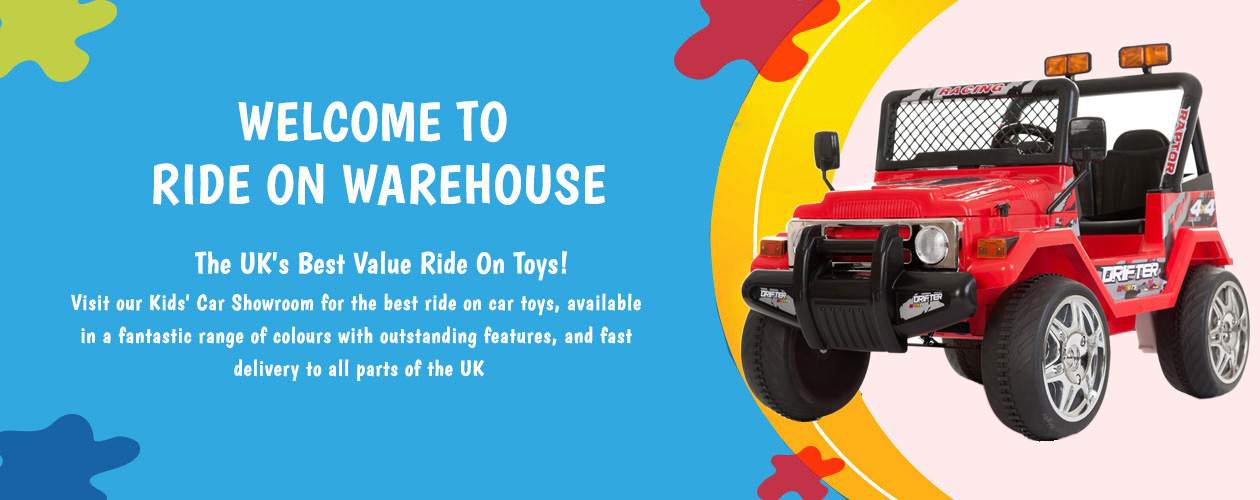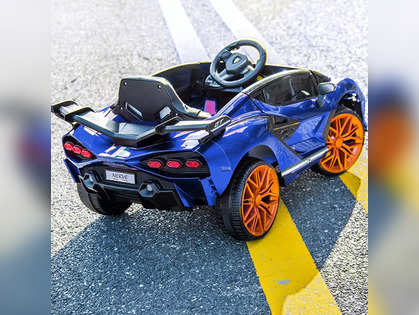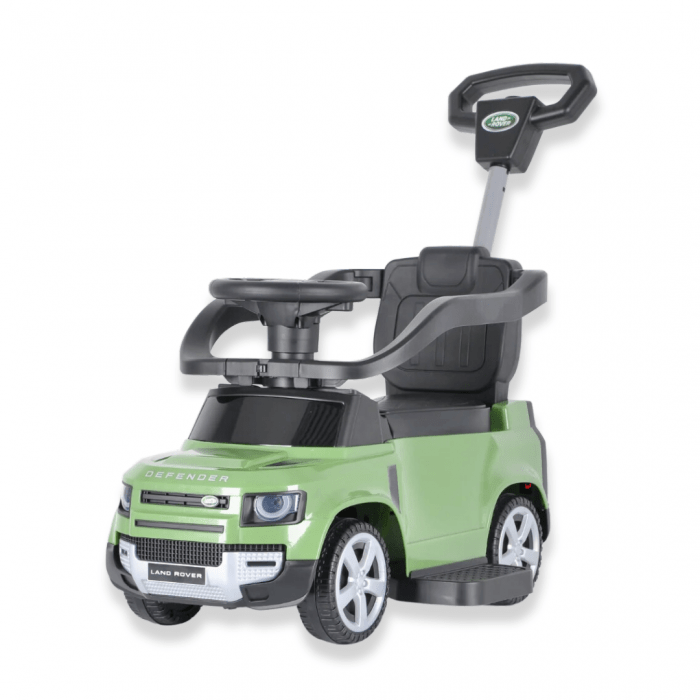To ensure the safety of your child take into consideration the following options. Seat Belts are one of the most important safety features that you should consider.
Pros - Seat belts help ensure your child's safety in the car ride-on, decreasing the risk of falling out or getting thrown out while playing. They also provide extra protection especially in sudden stops or changes.
Pros - Some cars on wheels do not include seat belts. This is especially the case for cars specifically designed specifically for toddlers. Kids may also find the seat belts to restrict their mobility or uncomfortable and may decide to avoid or avoid using them.
Sturdy Construction
Pros: A car that is built with quality materials and sturdy construction will be more durable, resistant to damage and ensure long-term safety and reliability. It is able to endure the rigors of playing and provide stability when used.
Cons - Strong construction is often more expensive and therefore, isn't affordable for some families. Additionally, the weight of the materials can affect the mobility and maneuverability.
Low Center of Gravity
Pros: Vehicles with a low centre of gravity have a less tendency to tip over. This decreases the risk of injury or accident. They provide greater stability and better balance, especially in turns and maneuvers.
Cons – Some ride-on vehicles with a lower center gravity compromise ground clearance and off-road capabilities and can restrict their versatility.
Parents Remote Control –
Pros- Ride-on cars that can be controlled remotely permit parents to monitor and supervise their child while they play. This provides an additional layer of security and protection. Parents can intervene in case of emergency, navigate difficult terrain, or avoid collisions.
Cons: Controlling parents using a remote may limit autonomy and independence in children as they depend on their parents' guidance and help when playing. In addition, models that are controlled remotely may cost more than models that have manual controls.
Speed Limiters
Pros: Ride-on cars with speed limiters, or speeds that can be adjusted enable parents to control the maximum speed, and decrease the possibility of accidents and collisions. They may gradually increase speed of the vehicle as a child gains confidence and skill.
Cons - Some kids may become bored with the lower speeds very quickly, leading to disappointment and frustration. In addition, the speed limiter may not be present on all models. Or it may require an additional feature or accessory.
Safe Start Technology -
Safe start technology reduces the risk of sudden lurches and jerks which could startle or even destabilize a child. It's safer and comfortable to drive.
Cons – Ride-ons that come equipped with safe-start technology are more costly. Furthermore, children might not find a gradual acceleration less exciting or enjoyable than fast stops and quick starts.
Visibility Enhancements
Pros – Ride-on cars equipped with visible enhancements such functioning headlights, reflective materials or taillights, increase visibility. This is especially the case in dimly illuminated areas or in a variety of conditions. The vehicles are more visible, which increases safety.
Cons: Visibility improvements could cause battery drain more quickly or increase the complexity of the design of the ride-on vehicle which increases the likelihood of failures or issues with maintenance.
If you consider the pros and cons of each safety option, you may choose the ride-on vehicle that is both safe and gives a fantastic play experience for your child. Follow the best kids ride on cars for website recommendations including electric ride along car, two seater electric cars, ride ons, ride electric car, toy car for car, remote control childrens electric cars, kidscars, lambo toy car, childs ride on car, toy a car and more. .

How Do You Keep And Assemble A Kid's Ride-On Car?
It is typical for children's' ride-on car to require assembly as well as regular maintenance to maximize performance and security. Here are the assembly and maintenance requirements for children's rides on vehicles.
The majority of ride-on vehicles are assembled and require a bit of assembly upon the arrival. This usually involves attaching the components such as the wheels, seats, steering wheel and other components according to the instructions of the manufacturer.
Follow the assembly instructions closely to ensure that every component is correctly aligned and securely attached. For final assembly, make use of the tools and hardware that are provided.
Cleaning -
To keep your vehicle in pristine condition and operating effectively, it's essential to keep it clean. Use a dampened soft cloth with water and mild soap to clean the exterior surfaces.
Special attention should be paid to the areas that are susceptible to build up, like tires, wheels, and the undercarriage. Use a toothbrush or a brush to clean dirt from places that are difficult to reach.
Beware of harsh chemicals or abrasive cleansers, as they may damage the paintwork or electronic components.
Battery Care
Care for your battery is vital if the ride-on is powered by rechargeable batteries. Proper battery care ensures performance and extend the battery's lifespan. Follow these tips for battery care -
Charge the battery before each use, and completely after. This will ensure you get the best performance.
The battery is not fully charged and leaving it connected for long durations can cause damage to the battery and shorten its life.
When not in use store the ride-on vehicle and its battery in a dry, cool place far from direct sunlight.
Regularly check the battery terminals for damage or corrosion, and clean them using a wire brush or terminal cleaner if necessary.
Replace the battery in case it doesn't hold an charge any longer or exhibits signs that it has been damaged or damaged.
Tire Maintenance -
Inspect the tires frequently to look for any signs such as wear, damage or loss of pressure. Tires can be inflated up to the level recommended by using a bicycle, or an air compressor.
Examine the tread pattern of your tires to identify obstructions and foreign matter that can cause flats or punctures. Replace or repair damaged tires if necessary. Eliminate obstructions.
Lubricate the wheels, axles, bearings and other components to ensure smooth rotation.
Occasional Repairs and Replacements
Wear and tear, or damage from accidents can cause ride-on car parts to need replacement or repair.
Be on the lookout for signs that your system is failing or becoming damaged, including strange noises or behavior or power loss, as well as other abnormalities. Consult the manufacturer’s instructions or call Customer Support to assist in troubleshooting.
Replace worn or damaged components as soon possible to prevent any further damage and ensure the safety of the ride on car.
These instructions for maintenance and assembly will help you keep your child's vehicle in top condition and allow them to have a enjoyable and safe playtime. Have a look at the recommended discover more about kids cars for website recommendations including riding digger, ride on toy, electric two seater cars, ride on toy, toy with car, childs ride on car, 2 seater electric cars, toy ride, toy a car, ride on toy and more. .

How Do I Decide The Budget For My Child's Ride-On Car?
When making a decision on your budget, it is important to consider factors like features, durability, longevity and your financial situation. This is how you can find the best budget and price-to-value.
You can start by researching the price average of children's ride-on vehicles that have the features you require. Online retailers, toy stores, and manufacturer websites can provide pricing information for different models.
What are the must-have features?
Pick features that guarantee your child's comfort and safety. Features such as working headlights or realistic sound effects could affect the price.
Prioritize features in accordance with the preferences of your child as well in your budget.
Think about Durability and Longevity
Look for ride-on vehicles that are constructed from sturdy materials. This includes high-quality plastics and metals. They need to be built to withstand elements outside as well as the everyday use.
To find out the endurance and longevity of various models, read reviews and ask parents for their recommendations. An initial investment of more than a few hundred dollars in a top-quality ride-on vehicle could result in savings over the course of time by avoiding repairs and replacements.
Comparing the Costs of different retailers
Comparing prices between retailers will enable you to find the most affordable bargains. Check out special offers and prices on online retailers, department stores and specialty stores.
Keep an eye on sales, discounts or clearance deals which can save you money on your purchase without losing quality.
Add additional costs
You should also take into consideration any additional expenses that could be incurred by purchasing a kid's ride-on car. This could include transportation, taxes or other accessories, such as spare batteries or safety equipment.
Estimate the total cost of ownership, including maintenance and accessories to make sure you can pay for them.
Develop a budget that is realistic
Set up a realistic budget in accordance with your current financial situation and research. This will align your priorities with your goals. Think about the durability of the features, as well as durability when determining the best cost you're willing to pay for your ride-on automobile.
Don't spend too much money on items that won't make a significant difference to your child.
Take into consideration the long-term value -
Evaluating the long-term worth of a child's cars in terms its quality, durability, and ability for your child to grow. It could be worthwhile investing in a more expensive model with more features over the long-term.
By setting a budget and carefully comparing prices, features, durability, and longevity to find the best value for your budget when you purchase an auto for your child to ride in your child. Focus on prioritizing the features that are most important to your child's enjoyment and safety while preserving your budget constraints. Have a look at the recommended JCB ride on toys kidscars.co.uk tips for blog advice including electric ride on cars, electric car ride, remote control childrens car, race car toy, kidscars, toy with car, riding digger, toy car for car, childrens electric ride on, toy car and more. .
